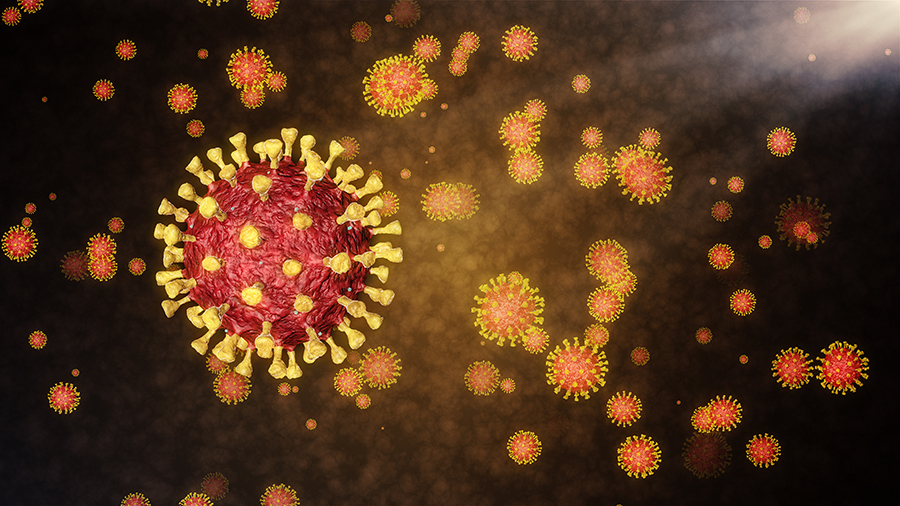Kawasaki disease incidence during COVID-19 sheds light on pathogenesis
By Shreeya Nanda, medwireNews Reporter
Data from a nationwide hospital survey show a marked decrease in the incidence of Kawasaki disease in Japan in 2020 compared with the previous year, with differences in patterns of reduction between children younger than 12 months and those aged 24 months or more.
Ryusuke Ae and co-researchers, based at Jichi Medical University in Tochigi, Japan, also highlight in JAMA Pediatrics that there was no evidence to indicate changes in parental behaviour to avoid hospital visits, “suggesting a true reduction in the number of patients who developed [Kawasaki disease] in 2020.”
The authors of an accompanying editorial note that “the reduction in [Kawasaki disease] cases during the COVID-19 pandemic has been documented in other Japanese cohorts and in countries throughout the world.”
They continue: “The unifying conclusion across these studies is that public health measures to mitigate transmission of SARS-CoV-2, such as masking, also decreased transmission of putative [Kawasaki disease] agent(s) through the respiratory tract.
“This is in keeping with prior research positing that a single, ubiquitous respiratory virus is the cause of [Kawasaki disease]”, write Mary Beth Son and Jane Newburger, both from Boston Children’s Hospital in Massachusetts, USA.
The study authors drew on the nationwide biennial Kawasaki disease survey completed by hospitals specialising in paediatrics, which showed increases in incidence from 2001 to 2019, “but clear and substantial reductions […] in both the number of cases and incidence rates in 2020.”
Specifically, there were 11,173 diagnoses of Kawasaki disease in 2020 compared with 17,347 in 2019, corresponding to a 35.6% reduction. The respective annual incidence rates were approximately 250 and 371 cases per 100,000 children aged 0–59 months.
However, there was no difference between 2020 and 2021 with regard to the number of days of illness that passed before first hospital visit and the proportion of patients who had presented at hospital by a given duration of illness. In both years, 83% of patients had a first hospital visit by day 5 and 96% by day 7.
These findings suggest that “parents of patients did not hesitate to visit a hospital during the COVID-19 pandemic”, say Ae and colleagues.
They also evaluated the monthly data of Kawasaki disease diagnoses by age, especially around the so-called COVID-19 special mitigation period from the beginning of March to the end of May 2020.
The team found that among children aged at least 24 months, there was a sharp fall in diagnoses after initiation of the special measures (such as school closures), with the greatest percentage reduction relative to the mean for the corresponding month in 2017 to 2019 seen in July 2020 (58.3%), followed by an increase from August.
By contrast, in patients aged younger than 12 months, diagnoses began to decrease from May 2020 and in this group, the greatest percentage reduction was observed in October (40.3%), with the rebound occurring from November.
“One potential reason for such differences is mask wearing”, suggest the researchers.
“Given the existing hypothesis that [Kawasaki disease] may be triggered by inhalation of an unidentified ubiquitous respiratory agent, mask wearing might help prevent triggering [Kawasaki disease] mostly in children 24 months or older, whereas younger children are discouraged from wearing masks because of suffocation risk.”
They add that another possible reason could be that “younger children are much less likely to use daycare centers in Japan” and “[t]herefore, nationwide school closures may have suddenly reduced human contact (and potential risk of acquiring unidentified [Kawasaki disease] pathogens) more dominantly” among older children.
The editorialists summarise: “While questions remain regarding the etiology of [Kawasaki disease], data gleaned from this unusual and difficult time characterized by social distancing and other measures to prevent interpersonal contact seem to point us back to a widely held hypothesis: [Kawasaki disease] is a pediatric vasculitis that is generally triggered by pathogens entering through the respiratory tract.”
And they conclude: “It remains to be determined which infectious agents are most likely to induce this immune response, whether there are non-infectious environmental triggers, and what genetic factors contribute to host susceptibility.”
News stories are provided by medwireNews, which is an independent medical news service provided by Springer Healthcare Ltd. © 2022 Springer Healthcare Ltd, part of the Springer Nature Group
JAMA Pediatr 2022; doi:10.1001/jamapediatrics.2022.3756
https://pubmed.ncbi.nlm.nih.gov/36251290/
JAMA Pediatr 2022; doi:10.1001/jamapediatrics.2022.3765

